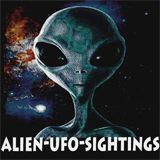UFO Spotter’s Checklist
Few experiences are as remarkable as an encounter with a UFO, from a distance or close up. Although your sense of wonder will be stimulated, it is important that you note and recall as much about your experience as possible. Memory- training exercises have applications in everyday life, and are particularly useful during and after UFO sightings.
- You are likely to be unable or disinclined to take notes as the event unfolds. Hence, the checklist below. Study it, or custom craft your own, and upload it to your smartphone, tablet, or notebook. For immediate note-taking or sketching, pencil and paper are good ideas.
- Record details of your sighting as soon as you are able.
- Vis-à-vis your safety during a sighting, be aware of your surroundings. Be mindful of dead ends, cliff edges, uneven terrain, low-hanging tree limbs, bodies of water, and other potential hazards.
- Remove yourself from the scene at any indication of electricity, heat or fire, unusual cold, gas or haze, “disturbed” air, or other phenomena with a potential to do physical damage
- Do not stare into lights, particularly if they are flickering or rotating.
- Do not make your presence known. Do not assume that the UFO, and its occupants (if any), are “friendly.”
- If you are detected, assume a neutral, unthreatening demeanor. If your departure seems prudent, execute it promptly and calmly.
- If occupants leave their craft to reveal themselves, be wary if they approach you. If the occupant extends a hand, or a hand gripping a device, retreat. Do not allow the occupants to step into your blind spots, and never allow them to get behind you.
- If you make your sighting at long distance, ask yourself if people in the area were apt to have been flying model planes or drones. If you live near an airport or military base, consider the possibility of routine flyovers or weather balloons. In rural areas, hot air balloons are not uncommon.
- Did the sighting take place near routes likely to be monitored by police or traffic helicopters? Is there an air show nearby? Were you near a park that encourages kite flying? Did your sighting occur on the Fourth of July or other holiday/celebration?
- Are there nearby businesses that might have engaged searchlights or advertising blimps? Did your sighting occur near parkland or a nature preserve with large populations of birds?
- Remember that laser pointers are common, and can be seen over considerable distances, particularly against low clouds and distant windows.
- If your sighting occurred near a body of water, consider that the Moon or lights of conventional aircraft may have reflected off its surface. Distant ships and boats will be lighted after dark; likewise, buoys, channel markers, and remote water-treatment plants.
- Ground lights from distant cities and towns may create odd effects, especially against partial clouds.
- Check with your local weather service or observatory for lightning or ball lightning, ice crystals, heat inversions, convection, unusual cloud formations, meteors, meteor showers, comets, an eclipse, visible planets, or other natural activity on the date of your sighting.
- Remember that the night sky is apt to reveal satellites, and the occasional satellite or booster reentry.
Although the checklist allows for estimates of speed, size, altitude, and distance, those things are extremely difficult to judge, particularly when an object is sighted against a “blank” sky that offers no reference points that might suggest relative size. Even experienced pilots routinely err in these estimations.
https://scienceandspace.com/ufos/getting-to-where-the-ufos-are-ufo-spotters-checklist-part-2/
